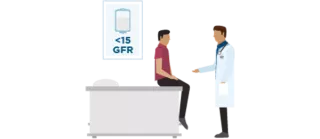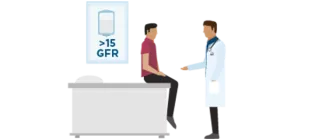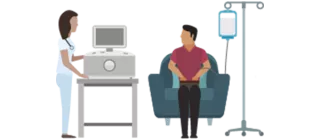
Why PD? Flexible treatment options
Depending on a patient’s renal function, PD can be offered as urgent-start, incremental, or conventional therapy. Each treatment regimen offers its own benefits to patients.
Did you know?
In the U.S., PD use has increased at a greater rate than hemodialysis (HD) each year since 2009.6 Since 2010, the number of PD patients has increased by 48%.
PD has a well-established market presence worldwide.
References
-
National Kidney Foundation. Available at https://www.kidney.org/patients/peers/dialysis. Accessed on November 30, 2017.
-
De Vecchi AF, Scalamogna A, Finazzi S, et al. Preliminary evaluation of incremental peritoneal dialysis in 25 patients. Perit Dial Int. 2000;20:412-417.
-
Sandrini M, Vizzardi V, Valerio F, et al. Incremental peritoneal dialysis: a 10-year single-centre experience. J Nephrol. 2016;29(6):871-879.
-
Jin H, Fang W, Zhu M, et al. Urgent-start peritoneal dialysis and hemodialysis in ESRD Patients: complications and outcomes. PLoS One. 2016;11(11): e0166181.
-
Arramreddy R, Zheng S, Saxena AB, et al. Urgent-start peritoneal dialysis: a chance for a new beginning. Am J Kidney Dis. 2014;63(3):390-395.
-
United States Renal Data System. 2016 ADR Reference Tables: Table D1 - Treatment Modalities. Available at: https:// www.usrds.org/reference.aspx. Accessed on November 30, 2017.
-
United States Renal Data System. 2017 ADR Chapters. ESRD Chapter 11. Available at: https://www.usrds.org/2017/view/v2_11.aspx. Accessed on August 1, 2018.
-
United States Renal Data System. 2017 ADR Chapters. ESRD Chapter 11, Figure 11.15. Available at: https://www.usrds.org/2017/view/Default.aspx. Accessed on August 1, 2018.








